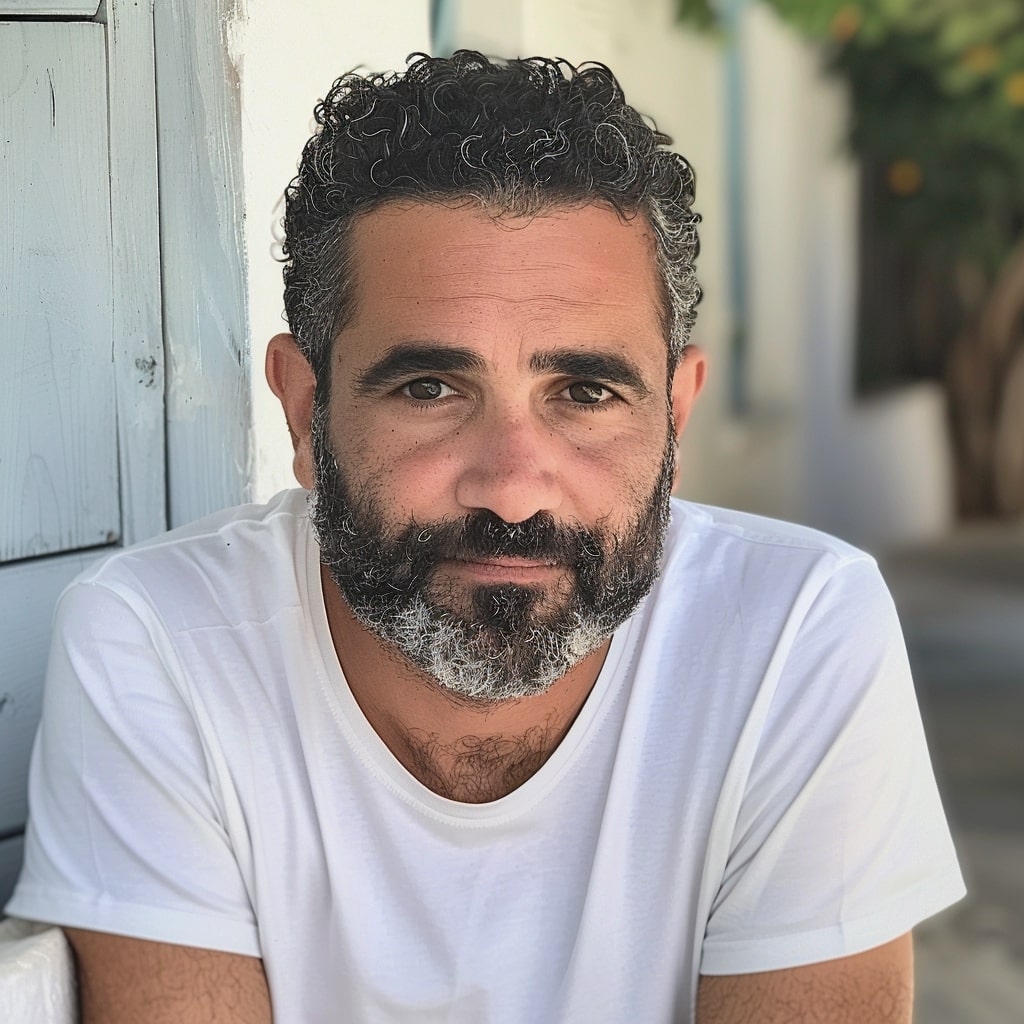There may not yet be an overall solution yet but a whole new generation has experienced what their parents did not
Twenty years after the opening of the first crossing point in 2003, the decision by the Turkish Cypriot side to allow Greek Cypriots to cross to the north for the first time since 1974, has changed the daily life of a whole new generation but a settlement of the Cyprus issue has remained elusive two decades on.
April 23, 2003 might have been a day like any other, as people on both sides of the island went through their daily grind. It was a Wednesday, and for Greek Cypriots the Orthodox Easter weekend was coming up. And then the news hit: the first crossing point along the buffer zone opened. The news spread like wildfire, the excitement turned palpable, and words like ‘historic’ and ‘momentous’ became all the rage.
While shaking things up, the opening of the Ledra Palace in Nicosia didn’t come entirely out of the blue. Days earlier, then Turkish Cypriot leader Rauf Denktas had telegraphed the move. Over on the Greek Cypriot side, newly-elected President Tassos Papadopoulos convened the National Council, where the somber mood contrasted sharply with the enthusiasm among the common folk.
Greek Cypriot officials, while not directly discouraging visits to the north, issued a pointed reminder that it would be “unthinkable” for Cypriots to hand over passports to Turkish Cypriots to visit their own country.
It didn’t matter. Traffic across the Ledra Palace grew from a trickle on the first day, to a flood.
The first Greek Cypriot was allowed through three hours after the checkpoint opened. A group of Turkish Cypriots on the other side applauded as he entered.
By 6pm on Thursday, 1,600 Turkish Cypriots had crossed into the south, and 700 Greek Cypriots had entered the north. Police on either side of the UN-police corridor had to call in reinforcements when long queues built up.
But those numbers were dwarfed over the next few days as the whole thing continued to pick up steam.
For Greek Cypriots, the harbour town of Kyrenia suddenly became a mere 20-minute trip over the mountains north of Nicosia.
By April 25, people had to wait in line for up to six hours for the chance to cross over to the north.
One such person interviewed by Reuters was Maria Socratous, then a 36-year-old Greek Cypriot, who sat in a traffic jam stretching back more than two miles from the crossing point.
”People are like rivers, you can’t stop them,” a Turkish Cypriot told media.
Feelings of bitterness and mistrust were swept away, and people on both sides paid scant attention to warnings from the killjoys who warned that entering the other side would mean ‘recognising’ it.
“What I am doing has nothing to do with politics. I just want to visit my occupied home,” one Greek Cypriot said.
A Turkish Cypriot by the name of Kemal Yorgancioglu, then aged 78, said he was crossing into the south with his two sons for the first time since the island was partitioned to visit some old Greek Cypriot friends.
“This is a beautiful day. We grew up on that side. It will be the first time I cross in 29 years,” he said.
Anecdotes like these were all over the place, capturing the moment.
Initially, crossings were opened for pedestrians only in April, but on May 10 the second crossing point at Ayios Dometios opened for vehicles.
But events don’t happen in a vacuum. How did it come to pass that Denktas, the poster child for rejectionism, became the very man who opened the floodgates, as it were?
The Turkish Cypriot leader was under a great deal of pressure in the months leading up to April 2003. Amid the backdrop of UN-sponsored peace talks, and the Republic of Cyprus’ upcoming accession to the EU, pro-reunification forces in the north became increasingly active – and loud. A platform of some 100 such activist groups coalesced under the ‘This Soil is Ours’ platform, holding mass demonstrations in the northern part of Nicosia. One such rally may have numbered up to 100,000 people.
Settlement talks had foundered in March after arguments over land and population exchanges, putting a big damper on hopes that a united Cyprus, rather than just the Greek Cyprus, could join the European Union in May 2004.
The UN had made a hasty attempt to come up with a version of the Annan plan – taking its name after the then UN Secretary-General Kofi Annan – which both sides could accept before February 28, 2003, a deadline set by the EU so that the whole process could be completed before Cyprus’s signature of the EU accession treaty, which took place on April 16, 2003 in Athens.
Having presented the ‘final’ version of his plan, Annan invited the Greek and Turkish Cypriot leaders to The Hague on 10 March, where they were to inform him whether they were prepared “to sign a commitment to submit the plan for approval at separate simultaneous referendums on 30 March 2003.”
Meantime the plan had been altered with the addition of extensive ‘Corrigenda and clarifications’, and in this new form was presented to the leaders on March 7, 2003. On the Greek Cypriot side there had been a change of leadership following elections on February 16, with Tassos Papadopoulos elected president. He received the altered plan on his way to The Hague to meet the Secretary General.
On March 10, 2003 in The Hague, Netherlands, the UN effort collapsed when Denktas told the Secretary-General he would not put the Annan Plan to referendum.
On the morning of March 11, and following negotiations with the two leaders and the guarantor powers lasting more than 19 hours, Annan announced that there had been no such agreement, and at that point the process which had begun in December 1999 reached “the end of the road.”
Back home, in the north, pro-settlement forces didn’t let up. Denktas was in political trouble.
“His decision to open the crossing points can be likened to loosening a pressure valve,” a former Greek Cypriot diplomat, who preferred to remain anonymous, tells the Sunday Mail.
“He had to do something.”
Political analyst Christoforos Christoforou has the same take. And he rejects the other hypothesis, namely that Denktas concocted a Machiavellian plan where he hoped that allowing contact between the two communities would turn into a flop – and so demonstrating in practical terms the distrust between the two sides.
To both commentators, that ‘3-D chess’ explanation doesn’t hold much water.
Christoforou also recalls how the emergence of Tayyip Erdogan in Turkey was a game changer.
“Vis a vis Cyprus, Erdogan marked a break with Turkish foreign policy, which up until that time saw the Cyprus question as having been solved in 1974. Erdogan, however, was open to a negotiated settlement.”
Relations between the new leader of Turkey and Denktas got strained from the outset – another pressure point on the Turkish Cypriot strongman.
Looking back now, 20 years later, what was the impact of the opening of the crossing points?
An obvious consequence is the increased interaction – social and commercial – between the two communities. For example, a 2009 survey by the Prio Cyprus Centre tells how the opening of the Ledra Street crossing boosted business on either side of the Green Line in Old Nicosia.
Incidentally, the Ledra Street crossing opened a full five years later – in April of 2008. Regarded as the birthplace of the division of the island, the opening of the street had particular symbolic significance.
And as Christoforou points out, the openings gradually led to thousands of Turkish Cypriots applying for citizenship of the Republic of Cyprus.
Also, prior to Cyprus’ accession to the EU, restrictions applied on Green Line crossings by foreigners imposed by the Republic of Cyprus. These were abolished for EU citizens under EU regulation 866/2004.
But has the increased interaction made a tangible difference in terms of the island’s political division.? Here again, the answer is obvious but in the negative, as subsequent peace talks likewise resulted in stalemate, still ongoing.
“Still, as long as contact – made possible by the opening of the crossing points – between the two communities exists, there is hope,” observes the former diplomat.







Click here to change your cookie preferences